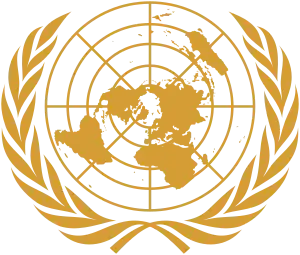 | |
 | |
| Abbreviation | ESCAP |
|---|---|
| Formation | 28 March 1947 |
| Type | Primary Organ – Regional Branch |
| Legal status | Active |
| Headquarters | Bangkok, Thailand |
Head | Executive Secretary of the United Nations Economic and Social Commission for Asia and the Pacific |
Parent organization | United Nations Economic and Social Council |
| Website | www.unescap.org |

The United Nations Economic and Social Commission for Asia and the Pacific (ESCAP) is one of the five regional commissions under the jurisdiction of the United Nations Economic and Social Council.[1] It was established in order to increase economic activity in Asia and the Far East, as well as to foster economic relations between the region and other areas of the world.[2]
The commission is composed of 53 Member States and nine Associate members, mostly from the Asia and Pacific regions.[3] In addition to countries in Asia and the Pacific, the commission's members includes France, the Netherlands, the United Kingdom and the United States.
The region covered by the commission is home to 4.1 billion people, or two-thirds of the world's population, making ESCAP the most comprehensive of the United Nations' five regional commissions.[4]
History
The commission was first established by the Economic and Social Council on 28 March 1947 as the United Nations Economic Commission for Asia and the Far East (ECAFE) to assist in post-war economic reconstruction. Its main mandate was to "initiate and participate in measures for facilitating concerted action for the economic reconstruction and development of Asia and the Far East."[2]
On 1 August 1974, the commission was renamed to the Economic and Social Commission for Asia and the Pacific (ESCAP) by the Economic and Social Council to reflect both the economic and social aspects of the Commission's work, as well as geographic location of its members.[5][6]
Scope
The commission works to address some of the greatest challenges facing the region through results-oriented projects, technical assistance and capacity building to member states in the following areas:[4]
- Macroeconomic policy and development
- Trade and investment
- Transport
- Social development
- Environment and sustainable development
- Information and communications technology and disaster risk reduction
- Statistics
- Sub-regional activities for development
- Energy
Additionally, the commission provides a forum for its member states to promote regional cooperation and collective action in pursuit of the 2030 Agenda for Sustainable Development.[4]
Member states
There are a total of 53 full member states and nine associate members, four of the member states are not geographically located in Asia or Oceania.
Full member states
The following countries are the full member states of the commission:[3]
.svg.png.webp) Afghanistan# (24 April 1953)
Afghanistan# (24 April 1953) Armenia (26 July 1994)
Armenia (26 July 1994).svg.png.webp) Australia (28 March 1947)
Australia (28 March 1947) Azerbaijan (31 July 1992)
Azerbaijan (31 July 1992)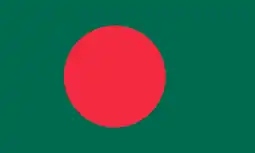 Bangladesh# (17 April 1973)
Bangladesh# (17 April 1973)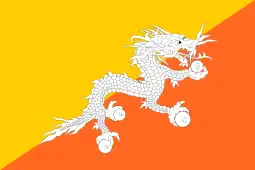 Bhutan# (06 January 1972)
Bhutan# (06 January 1972)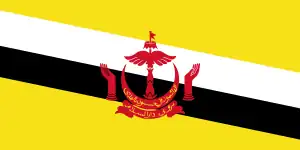 Brunei Darussalam (26 July 1985)
Brunei Darussalam (26 July 1985) Cambodia# (20 August 1954)
Cambodia# (20 August 1954) Chinaǂ (28 March 1947)
Chinaǂ (28 March 1947) Democratic People's Republic of Korea (the) (31 July 1992)
Democratic People's Republic of Korea (the) (31 July 1992)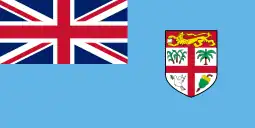 Fiji (03 August 1979)
Fiji (03 August 1979) France* ^ (28 March 1947)
France* ^ (28 March 1947) Georgia (25 July 2000)
Georgia (25 July 2000) India (28 March 1947)
India (28 March 1947) Indonesia (28 September 1950)
Indonesia (28 September 1950) Iran (the Islamic Republic of) (10 July 1958)
Iran (the Islamic Republic of) (10 July 1958) Japan (24 June 1954)
Japan (24 June 1954) Kazakhstan (31 July 1992)
Kazakhstan (31 July 1992) Kiribati# (26 July 1991)
Kiribati# (26 July 1991)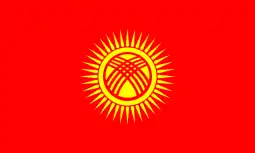 Kyrgyzstan (31 July 1992)
Kyrgyzstan (31 July 1992) Lao People's Democratic Republic (the) (16 February 1955)
Lao People's Democratic Republic (the) (16 February 1955) Malaysia (17 September 1957)
Malaysia (17 September 1957) Maldives (05 August 1976)
Maldives (05 August 1976)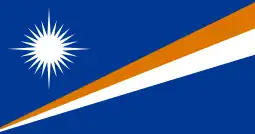 Marshall Islands (the) (31 July 1992)
Marshall Islands (the) (31 July 1992) Micronesia (the Federated States of) (31 July 1992)
Micronesia (the Federated States of) (31 July 1992)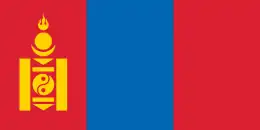 Mongolia (21 December 1961)
Mongolia (21 December 1961)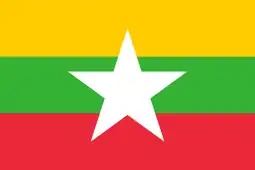 Myanmar# (19 April 1948)
Myanmar# (19 April 1948) Nauru (20 July 1971)
Nauru (20 July 1971) Nepal# (06 June 1955)
Nepal# (06 June 1955) Netherlands (the Kingdom of the)* (28 March 1947)
Netherlands (the Kingdom of the)* (28 March 1947) New Zealand (08 March 1948)
New Zealand (08 March 1948) Pakistan (30 September 1947)
Pakistan (30 September 1947) Palau (18 July 1996)
Palau (18 July 1996)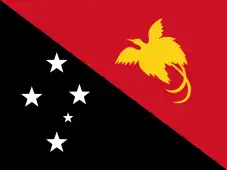 Papua New Guinea (27 August 1976)
Papua New Guinea (27 August 1976) Philippines (the) (28 March 1947)
Philippines (the) (28 March 1947) Republic of Korea (the) (20 October 1954)
Republic of Korea (the) (20 October 1954) Russian Federation (the)† (28 March 1947)
Russian Federation (the)† (28 March 1947) Samoa (05 July 1963)
Samoa (05 July 1963) Singapore (21 September 1965)
Singapore (21 September 1965)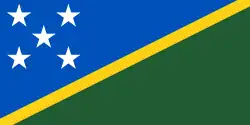 Solomon Islands# (03 August 1979)
Solomon Islands# (03 August 1979) Sri Lanka (10 December 1954)
Sri Lanka (10 December 1954)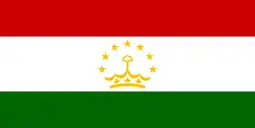 Tajikistan (31 July 1992)
Tajikistan (31 July 1992) Thailand (28 March 1947)
Thailand (28 March 1947) Timor-Leste# (18 July 2003)
Timor-Leste# (18 July 2003) Tonga (20 July 1971)
Tonga (20 July 1971) Türkiye (18 July 1996)
Türkiye (18 July 1996)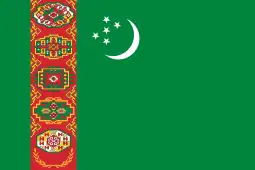 Turkmenistan (31 July 1992)
Turkmenistan (31 July 1992) Tuvalu# (26 July 1985)
Tuvalu# (26 July 1985) United Kingdom of Great Britain and Northern Ireland (the)* (28 March 1947)
United Kingdom of Great Britain and Northern Ireland (the)* (28 March 1947) United States of America (the)* (28 March 1947)
United States of America (the)* (28 March 1947)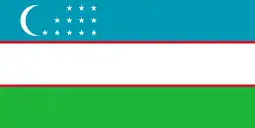 Uzbekistan (31 July 1992)
Uzbekistan (31 July 1992) Vanuatu (27 July 1984)
Vanuatu (27 July 1984) Viet Nam (23 August 1954)
Viet Nam (23 August 1954)
Notes:
* Not geographically located in Asia or Oceania
† Continuation of membership of the former Union of Soviet Socialist Republics (USSR)
ǂ Continuation of membership of the Republic of China (ROC)
^ Continuation of membership of the French Fourth Republic
Associate members
The following countries and territories are the associate members of the commission:[3]
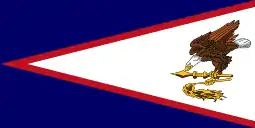 American Samoa* (28 July 1988)
American Samoa* (28 July 1988)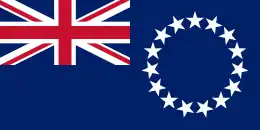 Cook Islands (the)* (11 July 1972)
Cook Islands (the)* (11 July 1972)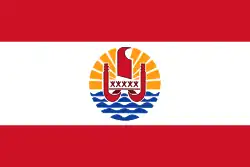 French Polynesia* (31 July 1992)
French Polynesia* (31 July 1992) Guam* (24 July 1981)
Guam* (24 July 1981)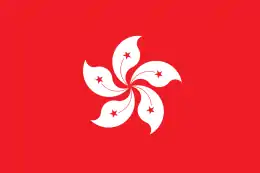 Hong Kong, China* † (25 November 1947)
Hong Kong, China* † (25 November 1947)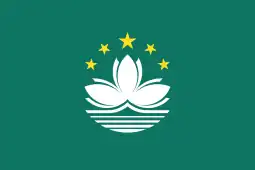 Macao, China* ǂ (26 July 1991)
Macao, China* ǂ (26 July 1991)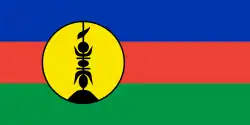 New Caledonia* (31 July 1992)
New Caledonia* (31 July 1992) Niue* (03 August 1979)
Niue* (03 August 1979) Northern Mariana Islands (the)* (22 July 1986)
Northern Mariana Islands (the)* (22 July 1986)
Notes:
* Not a member state of the United Nations
† Change of name from Hong Kong to Hong Kong, China (01 July 1997)
ǂ Change of name to Macau, China (20 December 1999) and further changed to Macao, China (04 February 2000)
Locations
Headquarters

The commission was originally located in Shanghai, Republic of China, from its foundation until 1949, when it moved its headquarters to the United Nations Conference Centre in Bangkok, Thailand.[5]
Subregional offices
The commission maintains five subregional offices in order to better target and deliver programs, given the large size of the region.[7]
The subregions and their headquarters are as follows:[8]
- East and North East Asia (ENEA) subregional headquarters – Incheon, Republic of Korea
- North and Central Asia (NCA) subregional headquarters – Almaty, Kazakhstan
- South and South West Asia (SSWA) subregional headquarters – New Delhi, India
- South East Asia (SEA) / ASEAN subregional headquarters – Jakarta, Indonesia
- The Pacific (PACIFIC) subregional headquarters – Suva, Fiji
Executive secretaries
The following is a list of the executive secretaries of the commission since its foundation:[9][10]
| Secretary | Country | Term | |
|---|---|---|---|
| 11 | Armida S. Alisjahbana | 2018–present | |
| 10 | Shamshad Akhtar | 2014–2018 | |
| 9 | Noeleen Heyzer | 2007–2014 | |
| 8 | Kim Hak-su | 2000–2007 | |
| 7 | Adrianus Mooy | 1995–2000 | |
| 6 | Rafeeuddin Ahmed | 1992–1994 | |
| 5 | Shah A M S Kibria | 1981–1992 | |
| 4 | J. B. P. Maramis | 1973–1981 | |
| 3 | U Nyun | 1959–1973 | |
| 2 | Chakravarthi V. Narasimhan | 1956–1959 | |
| 1 | Palamadai S. Lokanathan | 1947–1956 |
Publications
The commission releases a variety of publications detailing its work and updates on its mandate, as well as on a wide variety of issues affecting its member states. Some of these publications include:[10][11]
- Asia-Pacific Countries with Special Needs Development Report
- Asia-Pacific Development Journal
- Asia-Pacific Disaster Report
- Asia-Pacific Trade and Investment Report
- Economic and Social Survey of Asia and the Pacific
- Review of Development in Transport in Asia and the Pacific
- SDG Progress Assessment Reports / Statistical Yearbook for Asia and the Pacific
See also
- United Nations System
- United Nations Economic and Social Commission for Western Asia
- United Nations Economic Commission for Europe (overlapping membership)
- United Nations Economic Commission for Latin America and the Caribbean (overlapping membership)
- Trans-Asian Railway Network Agreement
- Asian Highway Network
References
- ↑ United Nations Economic and Social Council (n.d.). "Subsidiary Bodies of ECOSOC". United Nations Economic and Social Council. United Nations. Retrieved 27 December 2018.
- 1 2 United Nations Economic and Social Council Resolution 37(IV). Economic Commission for Asia and the Far East E/RES/37(IV) 28 March 1947. Retrieved 27 December 2018.
- 1 2 3 United Nations Economic and Social Commission for Asia and the Pacific (n.d.). "ESCAP Member States and Associate Members". United Nations Economic and Social Commission for Asia and the Pacific. United Nations. Retrieved 27 December 2018.
- 1 2 3 United Nations Economic and Social Commission for Asia and the Pacific (n.d.). "About ESCAP". United Nations Economic and Social Commission for Asia and the Pacific. United Nations. Retrieved 27 December 2018.
- 1 2 United Nations Economic and Social Commission for Asia and the Pacific (n.d.). "History". United Nations Economic and Social Commission for Asia and the Pacific. United Nations. Retrieved 27 December 2018.
- ↑ United Nations Economic and Social Council Resolution 1895(LVII). Change of name from "Economic Commission for Asia and the Far East" to "'Economic and Social Commission for Asia and the Pacific" E/RES/1895(LVII) 1 August 1974. Retrieved 27 December 2018.
- ↑ United Nations Economic and Social Commission for Asia and the Pacific (n.d.). "Subregional Activities for Development". United Nations Economic and Social Commission for Asia and the Pacific. United Nations. Retrieved 27 December 2018.
- ↑ List of countries in the Asia-Pacific region and subregions
- ↑ United Nations Economic and Social Commission for Asia and the Pacific (n.d.). "Previous Executive Secretaries". United Nations Economic and Social Commission for Asia and the Pacific. United Nations. Retrieved 27 December 2018.
- 1 2 Dag Hammarskjöld Library (24 August 2018). "Economic and Social Commission for Asia and the Pacific (ESCAP)". Dag Hammarskjöld Library. United Nations. Retrieved 27 December 2018.
- ↑ United Nations Economic and Social Commission for Asia and the Pacific (n.d.). "Publication Series". United Nations Economic and Social Commission for Asia and the Pacific. United Nations. Retrieved 27 December 2018.
External links
- UN Economic and Social Commission for Asia and the Pacific
- ESCAP Pacific Operations Centre EPOC
- Centre for Alleviation of Poverty through Secondary Crops' Development in Asia and the Pacific (CAPSA)
- The publication Asia and the Pacific: A Story of Transformation and Resurgence provides a detailed overview of ESCAP's work since the late 1940s (1947-2014).